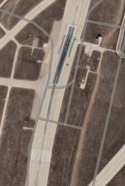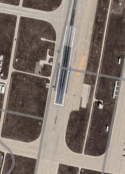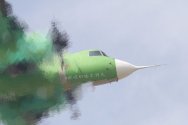Out of curiosity, are these planes modified in any way to replicate such a thing?. I don't see tailhooks and the landing gear doesn't seem beefy enough to withstand slaming on a deck, even a simulated one.
Given the limited landing distances available on a carrier, a pilot (regardless if he/she is a fast jet or prop pilot) landing on a carrier immediately goes into missed approach mode and selects full throttle/power as soon as the plane touches down. This is done just in case they miss the wire, or for whatever reason the plane fails to trap. So in essence when pilots practice carrier landings at an airfield (what is known as Field Carrier Landing Practice), they're essentially conducting touch and goes.
If you looked at satellite images of Huangdicun where the PLAN carrier air wing is currently based, you'll see an area of the runway (I can identify two by eye on the northern and southern end of Runway 01/19) designated for Field Carrier Landing Practice, and the markings replicate the approximate size of the landing area of an aircraft carrier. Note the lack of trap wires.


The lesson objectives in Field Carrier Landing Practice are to train pilots on how the pattern works (especially sequencing on the overhead break), how to take instructions from Landing Signal Officers (especially when he/she waves you off on the approach), but more importantly to get used to the mindset of "Meatball, Lineup, Angle of attack"
- Meatball
- The lighting system on the carrier (or airfield in this case) that shows the approach path of the plane
- Lineup
- Angle of attack
- High performance military planes tend to use AoA instead of airspeed for landing
- Essentially works the same way as using airspeed as reference for landing, since flying an airspeed + given configuration ensures the plane is in the right attitude and AoA for landing
That's my long elaborated way of saying Field Carrier Landing Practice doesn't exactly require significant airframe modifications, as long as the airframe (in the case the Y-7) itself can replicate the flying characteristics of the plane the pilots will be tracking towards (in the case the KJ-600 and potential Carrier Onboard Delivery plane that has yet to be revealed).
Videos of the US Navy conducting Field Carrier Landing Practice:





